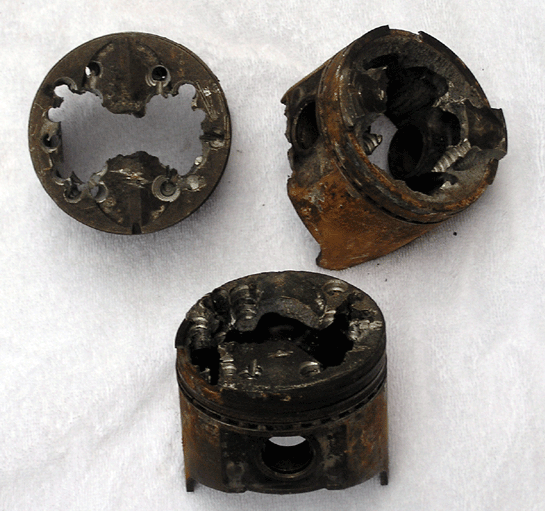The goal is to restore the T-bird to as near factory new as possible. That means disassembling most of the car, de-rusting and repainting individual parts, replacing worn out components, and reassembling. Luckily, there is minimal body work required — there’s no frame damage, some minor dents and a few rust holes. Body surfaces will be sanded, primed, and repainted, including the engine compartment, underside, and chassis. Undercoat will be applied inside fenders to reduce road noise and prevent future rust.
We recently removed and de-gunked the C6 automatic transmission, to be overhauled at a local trans shop. Now the priority is to clean, prime, and paint the engine compartment so that the C6 and engine can be reinstalled.
During the cleaning we noticed that the front stabilizer bar (sway bar) was bent. Drive Line Service of Atlanta (770-242-9365) was able to partially straighten it for $20. However, we’re searching the web for a replacement part. (If anyone has a lead on one, please let me know.)
Another problem is that over time the battery leaked acid and rusted out the battery compartment, which will require some complicated metalwork to remedy. We designed a metal insert using CAD software but still, effecting a seamless repair will be a challenge.
Almost everything in the passenger compartment (seats, console, carpeting, etc.) were removed for rehab. The seat covers are in good condition. However the dashboard is severely sun-dried and cracked. The vinyl door panels and headliner are also damaged from exposure and age. Re-covering with new vinyl is not too difficult, but as of yet we haven’t been able to source vinyl that matches the original color.
Removed the dual exhaust pipes, which are in great condition. Just need to be sanded and coated with high temperature paint. The resonators and mufflers are rusted out and will be replaced with new.
OK, that about brings the project status up-to-date. Future posts will feature work in progress. Thanks for visiting.


